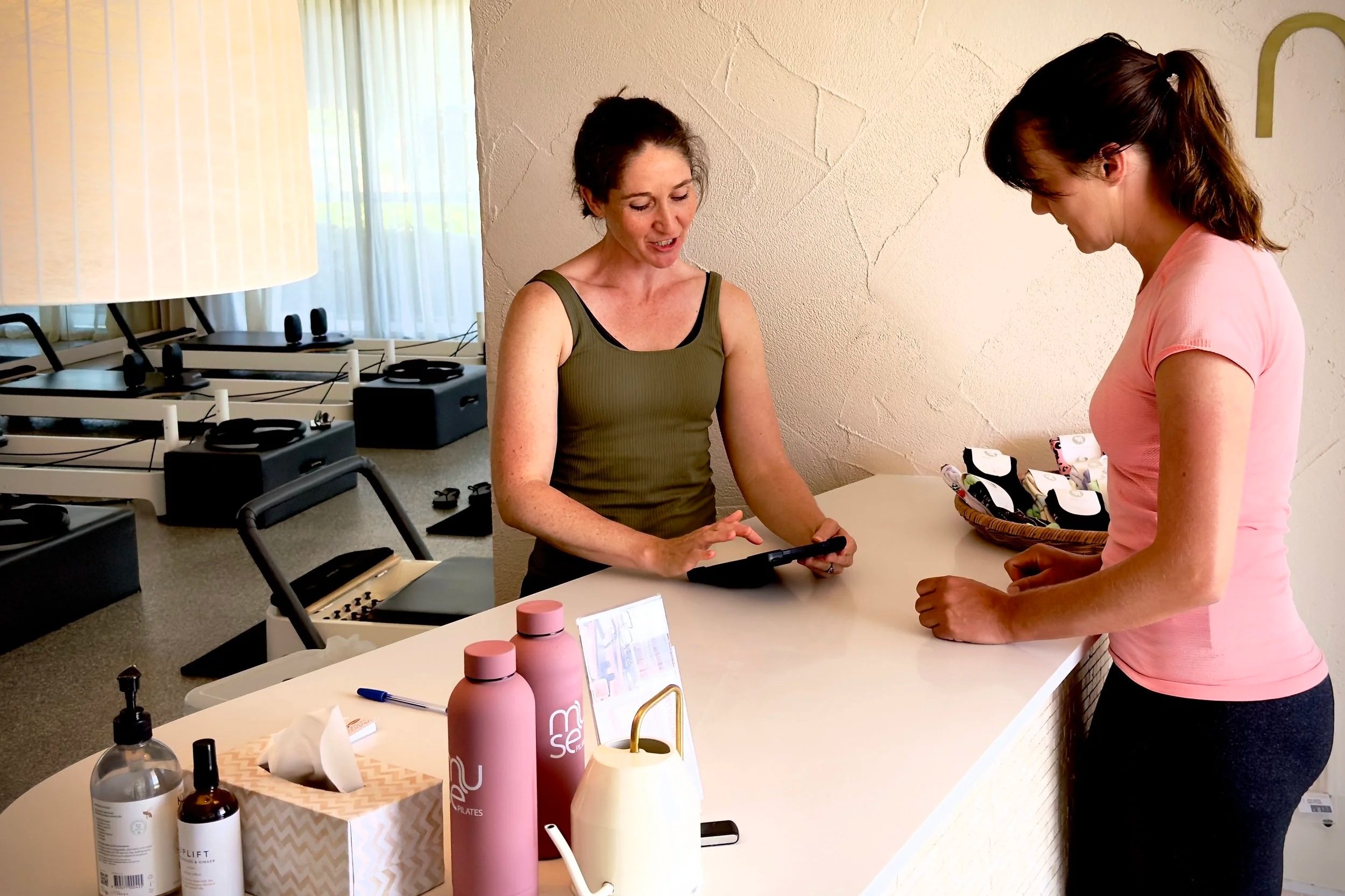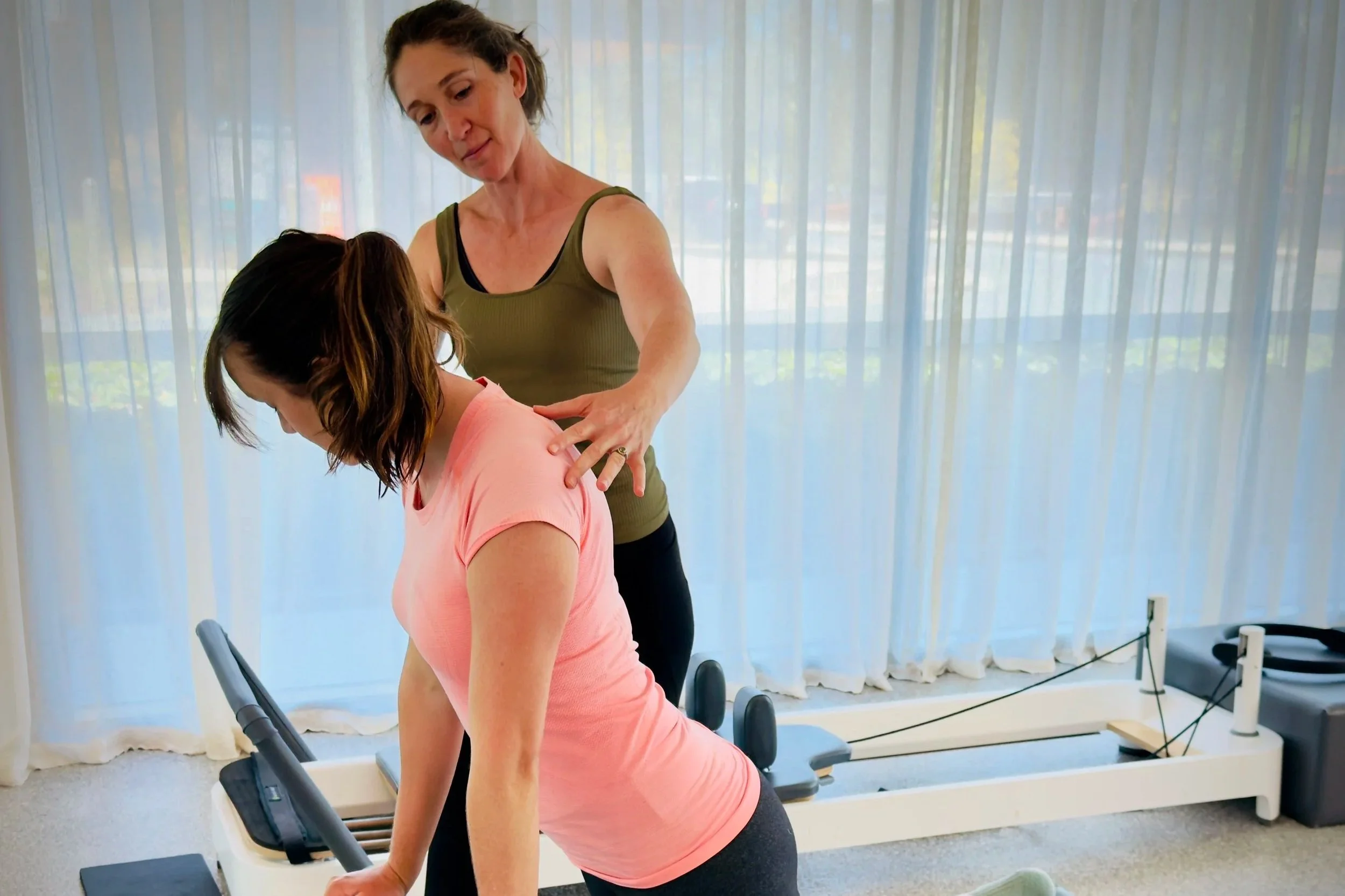How to Survive and Thrive as a new Studio Instructor
Moving into the pilates world, rebirthed as a pilates instructor, can be unbelievably nerve-wracking and overwhelming. There will be the excitement of growing both as an individual and as an instructor coupled with renewed passion. The first few weeks, especially, will be mentally and physically exhausting as you deal with class plans, new names to remember, flows, sequences, layers, and hours holding space for clients. So what habits can you embrace to support yourself – and enable you to shine as an instructor?
The Basics:
It cannot be emphasised enough how much getting the basics sorted out can make or break your experience and that of your clients, colleagues, and the studio owner. Get them locked in! Familiarise yourself with class types, cancellation policies, set-up and close procedures, pre- and postnatal policies. Take the time to know and implement this all on autopilot.
Once you have that implemented, what are the things you can do to stand out? Often it is the little things, the tasks that may take 5 minutes but do not go unnoticed. That quick sweep over the studio with the vacuum cleaner; taking an extra moment to give the mirrors a wipe. Letting the studio manager or owner know the grip-sock stock is low or that you need more wipes. Showing initiative, you might share upcoming trainings with colleagues, or bring fresh teaching knowledge back to your studio to implement and share. You may have other wellness skills such a meditation or breathwork that you might be able to add to studio offerings. Studios are quickly looking to bring in other wellness offerings, so your diverse skills may help you stand out within your studio community. You may have other skills in social media or marketing that you could bring in to support and grow that community.
Community:
Showing up as an active studio member is essential to your success as a new studio instructor. Participating in other instructors’ classes puts you in front of clients, helps you maintain your self-practice, and lets you see how others plan and run classes. You will always learn and grow in some way as well as develop strong relationships with clients and colleagues. Continue to encourage your curiosity for lifelong learning, taking on constructive and positive feedback to improve your teaching.
Communication:
Quick, crystal-clear communication is key to strong relationships! As an instructor you are the face of the business. You directly impact the experience clients have upon entering the studio. Get to know your clients by using their names, welcoming them into the studio with genuine interest. Communication extends past the client to your colleagues, showing them respect and kindness, learning and growing from each other. It also encompasses your relationship with the studio owners. Respond quickly to group communication, acknowledge you have read studio updates and accept covers you can take quickly. Same in reverse: if you need covers, get organised as early as possible.
Take a step back from feelings of exhaustion and depletion when you start teaching. The following are actionable habits you may begin to weave into your routine to support your mind and body while navigating regular instructor-work.
Nourish:
Stay nourished and hydrated! Make sure you are fuelling your body well. Eat healthy meals prior to teaching your blocks and keep on hand quick nutrient-dense snacks to consume in breaks. A protein bar, some nuts, veggie sticks and hummus, a protein shake, dark chocolate: discreet snacks you can quickly consume when you have a second between teaching that will keep you feeling full and fuelled.
Boundaries:
Closely knitted to nourishing yourself are boundaries and knowing how to hold them. This may take a little experimenting, trial and error to work out how many sessions a week you can teach without feeling exhausted and leading to burnout. For some it may be 6, for others 26. It is completely personal and different periods of your life may warrant different boundaries. Experiment until you find what works. Try adding extra sessions, lightening your load, switching up teaching am or pm classes and importantly taking time off to recharge when you need it.
Friends and Mentors:
Lastly, find your pilates friend or friends. Maybe it is one close instructor friend with whom to debrief, swap memes, and chat all things pilates. One person who, when you text, will come through with the last-minute class plan to save your exhausted brain. Finding a mentor who can support you, help you set goals, stay accountable and assist in forging a pathway for your pilates career is important too. It helps you stay focused on your why and continue to stay passionate and aligned for a satisfying career. You may find a mentor in another colleague, an instructor you come across at another studio or even a tutor from your training.
Work through these actionable steps to create a pilates studio career built on solid foundations. Begin to tackle and implement one of these at a time, gradually building your confidence and resilience as an instructor. With persistence and passion, you will grow into a thriving and sought-after instructor.
Anna has several years’ experience teaching and building studio community. Anna built a home studio from the ground up, on picturesque acreage in the northern rivers before relocating back to Canberra where she now teaches regularly. Having had strong, inspirational mentors herself, she has a passion to continue to inspire and support other instructors to follow their pilates dreams.




